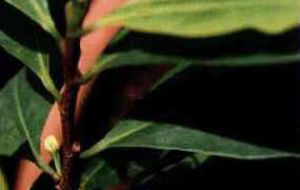MercoPress. South Atlantic News Agency
Bolivia plans to launch new coca leaf energy drink, “Coca Colla”
 Coca Cola imports 8 tons of coca leaves from the Andes region every year to flavour the popular drink
Coca Cola imports 8 tons of coca leaves from the Andes region every year to flavour the popular drink The Bolivian government plans to help market the nation’s coca plant crops in products such as energy drinks, tea, toothpaste and flour.
A group of farmers in Central Bolivia’s Chapare region of Cochabamba have created an energy drink “Coca Colla” named after the Colla people: Andean tribes who cultivated the coca plant in the high mountain areas bordering Bolivia, Chile and Argentina.
Deputy Minister of Coca, German Loza, said the energy drink is a “proposal” which does not have technical support and in its current stages only benefits private business.
“The aim now is to provide greater social benefits to producers and suppliers of the raw material,” he said.
Marketing the beverage with a buzz would require modifying current law, which prevents exportation of any product derived from the coca plant. The law allows only 12,000 hectares of coca plants to be planted - used for traditional purposes only like tea, chewing the leaves and religious rituals.
Bolivian President Evo Morales, who once headed the coca growers' union in the Chapare region, last year vowed to increase the area used to grow coca bushes to 20,000 hectares.
Morales said coca leaves have been cultivated in the Andes Mountains for 3,000 years and are part of the culture and identity of his people.
A report from the United Nations Office on Drugs and Crime said that through 2008 there were 30,500 hectares of coca in Bolivia in cultivation.
The Coca-Cola Company imports eight tons of coca leaves from South America each year.
Up until 1903 a typical serving of the popular beverage Coca-Cola contained around 60mg of cocaine. While the beverage still contains extracts of coca-leaves, the leaves are used only for flavouring, while the drug is removed.
By Laura Burgoine – Santiago Times




Top Comments
Disclaimer & comment rulesCommenting for this story is now closed.
If you have a Facebook account, become a fan and comment on our Facebook Page!